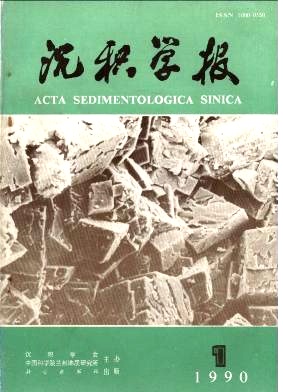GENESIS OF TONSTEIN, PIANLINITE AND KAOLINITE (ROCK) INTERCALATED IN THE COAL SEAM IN THE NORTH AREA OF SHANXI PROVINCE
- Received Date: 1987-08-27
- Publish Date: 1990-03-10
Abstract: Tonstem, Pianhnite and purple Kaolinite occur as intercalithes in the coal seams m the north area of Shanxi province and its neighbouring areas of the south area of Inner Mongolia and the east area of Shanxi province. The three kinds of clay rock intercalith are always located in the same horizon or the similar horizon, or closely associated with each other.They are all formed in swamp environment. Moreover the author considers that they are not only different in their source material but also in the pH value of water of the swamp in which they were deposited. In the north area of Shanxi province coal seam of Lower Permian-Upper Carboniferous can be divided into 1-9 layers from top to bottom which are often intercalated with tonstein. There are two opinion about the genesis of tonstein. One considers that it is formed by sedimentation of the-weathered-and-water-transported-materials of geneses and mediate acidic igneous rocks on the Paleo-continent near by .The other maintains that volcanic elastics is dropped into swamp and dissolved by water and. kaolinized by easyly seperatng out the dissolved elements to form as tonstein. Here the author holds another opinion, i.e., some tonstein are formed by colloid precipitation with ordering well and high crystalic coeficient Kaolinite and relics of high temperature quartz and sanidine which indicate the dominating of volcanic elastics over the terrestrial elastics in their source material. On the contrary the terrestrial elastics dominated tonstein (at the bottom of No 9 coal layer of the north area of Shanxi province) contain more or less clastic materials, such as sandy and silts quartz and microline and colloid clay particles. No high temperature quartz and sanidine are contained. And the former is pure, always intercalated in the middle of a coal layer. The later are not so pure and always occur as hanging or foot wall of a coal layer with a few exception. Pianlinite (A12O3 · 2SiO2H2O) is the other intercalith in coal seam in the north area of Shanxi province whose horizon corresponds to No 4 coal layer. It occurs as single layer or multi-layers. The author (1963) pointed out that it was formed by the alternating precipitation of SiO2and A12O3 in which prysmatic-low-temperature-euhedral-quartz could be seen. During diagenesis colloid water was squeezed out and the precipitates began to transform to meta-crystalized minerals of pianlinite then recry talized, possibly through allophane mage The formation condition of pianlinite is different from that of kaolinite lying n (I) p- I value of the swamp water: (2) the fine source material particle. The-weathered-fine-terrestrial-material, such as aphanilic and colloid clay transported by water to or the -erupted-fine-volcanic clastic-materials, such as vitreous elasties and crystal elastics dropped into strong acidic swamp (pH4) would be dissolved. When PH rised to 4.8 5 precipitates of A12O3 : SiO2 = 1 : 2 would be formed which turned to pianlinite throng allophane stage by gradually squeering out colloid water (allophane turned p(?) can be seen in Hun yuan area) during diagenesis. In resent years some geologists argue that such pianlinite and kaolonite rock (?) the natural burning of coal layer. Bui piamlinite and meta-kaolinite are different in ther propen Especially the organic materatin the dark pianlinite rock are oxidized at 325℃ white (?) of kaolinite takes place above 500℃ . Therefore organic material can not remain after (?) dewater ing In addition, enough oxygen is needed to cause coal-burning which can only appears abou the ground surface and surfaces in shaft because of the access of air The author, found Pranlini in Chaihe mining aren at the depth of 40m underground where no fractures could be seen and m-association of coal layer and pianlinile layer could be seen. And low-temperature- arysmatic dihedral-quartz was found with it All this menuened above make sure that pianlinite is no formed by the naturally burned coat. Purple kaolinite rock is mainly associated with No.4 coal layer of Shanxi Formation No 9 coal,ayer of the Talyuan Formition. There are two opmicsns about itls genesis(1)formeby primary scdimentation. (2) formed by weathering and residoal accumulaton the weathcrrng of coal. The author agrees with the two opinion but heconsiders that forme,also relatcd to organac acid leaching, recrystalization and orderczation of kaoim- tc:and the
| Citation: | Liu Changling. GENESIS OF TONSTEIN, PIANLINITE AND KAOLINITE (ROCK) INTERCALATED IN THE COAL SEAM IN THE NORTH AREA OF SHANXI PROVINCE[J]. Acta Sedimentologica Sinica, 1990, 8(1): 65-78. |






 DownLoad:
DownLoad: